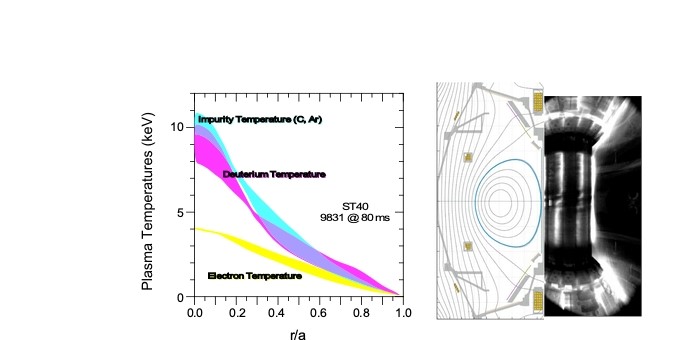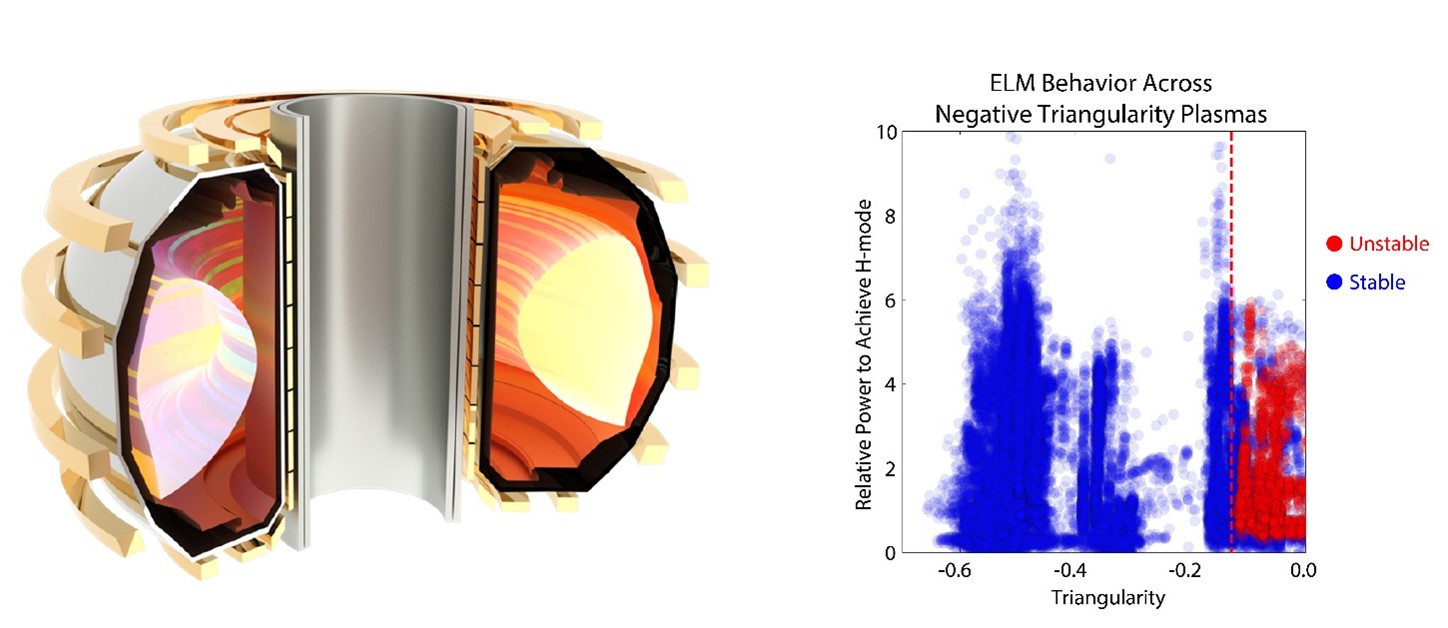Small Fusion Experiment Hits Temperatures Hotter than the Sun’s Core
National laboratory researchers partner with a private company to achieve 100-million-degree temperatures inside a high magnetic field spherical tokamak.

The Science
To produce commercial energy, future fusion power plants will need to achieve temperatures of 100 million degrees C. To do so requires careful control of the plasma. In this study, researchers refined operating conditions to achieve the necessary temperatures in a compact spherical tokamak device called ST40. This device is unique; it is much smaller and has a more spherical plasma than other fusion devices. To achieve these results, the researchers used an approach similar to past “supershots” that produced more than 10 million watts of fusion power in the TFTR tokamak in the 1990s.
The Impact
This effort demonstrated fusion-relevant ion temperatures in a compact, high magnetic field, spherical tokamak for the first time. This confirms that the spherical tokamak can achieve one of the conditions necessary for commercial fusion energy production. These results also show that similar fusion pilot plants may lead to more compact, and potentially more economical, fusion power sources than other configurations.
Summary
Princeton Plasma Physics Laboratory (PPPL), Oak Ridge National Laboratory (ORNL), and Tokamak Energy Ltd researchers worked within a first-of-the-kind Collaborative Research and Development Agreement (CRADA) joint framework to develop operational scenarios and analysis methods. Their experiments have now demonstrated the achievement of fusion-relevant high ion temperatures in a privately built experimental fusion facility. PPPL and ORNL researchers have actively participated in the ST40 device’s operation and data analysis to achieve these plasma temperatures required for commercial fusion energy.
In the research, ST40 plasmas operated at toroidal magnetic field values of just over 2 Telsa and were heated by 1.8 million watts of high energy neutral particles. While the ST40 plasma discharges lasted for only 150 milliseconds, the plasma showed ion temperatures of more than 100 million degrees Celsius. The researchers used the TRANSP transport code developed at PPPL to determine the ion temperature of the main species deuterium based on the ranges of impurity temperature profiles that were measured. These profiles reveal the impurity ion temperature range (shown in blue in the image above) well above 8.6 keV (100 million degrees Celsius), and the range of deuterium temperatures (shown in magenta) around the 8.6 keV level.
Contact
Stanley Kaye
Princeton Plasma Physics Laboratory, Princeton University
Funding
The PPPL and ORNL portion of the research was funded by a Department of Energy Office of Science Collaborative Research And Development Agreement with Tokamak Energy Ltd.
Publications
McNamara, S.A.M., et al., Achievement of ion temperatures in excess of 100 million degrees Kelvin in the compact high-field spherical tokamak ST40. Nuclear Fusion 63, 054002 (2023). [DOI: 10.1088/1741-4326/acbec8]
Bell, M.G., et al., Overview of TFTR Results. Nuclear Fusion 35, 1429 (1995). [DOI 10.1088/0029-5515/35/12/I02]
Related Links
Tokamak Energy moves closer to commercial fusion: 100M degree plasma a world record for a spherical tokamak, Tokamak Energy Ltd website.
Highlight Categories
Program: FES
Performer: DOE Laboratory , Industry



